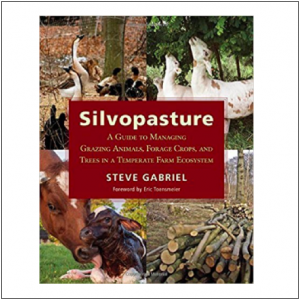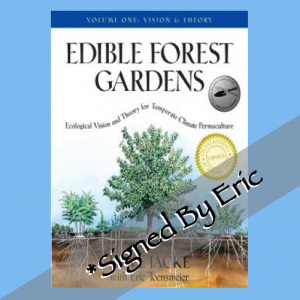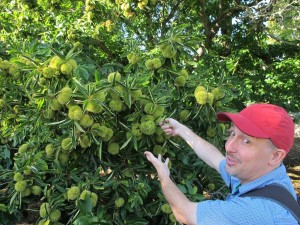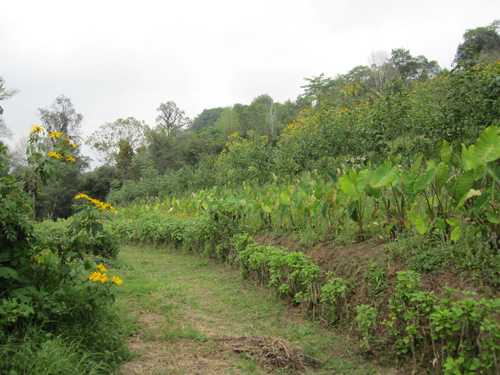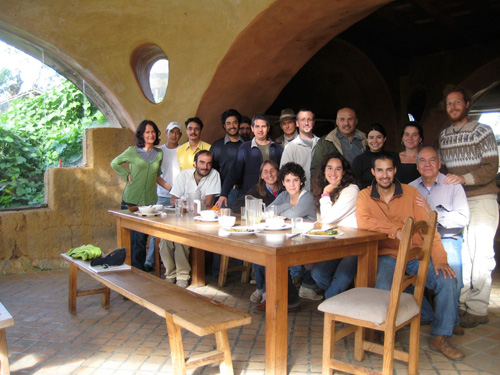This article is an excerpt from my recently published book Carbon Farming: A Global Toolkit for Stabilizing the Climate with Tree Crops and Regenerative Agriculture Practices, and was part of a series promoting my kickstarter campaign to raise funds to complete the book. You can order a copy and learn more about carbon farming.
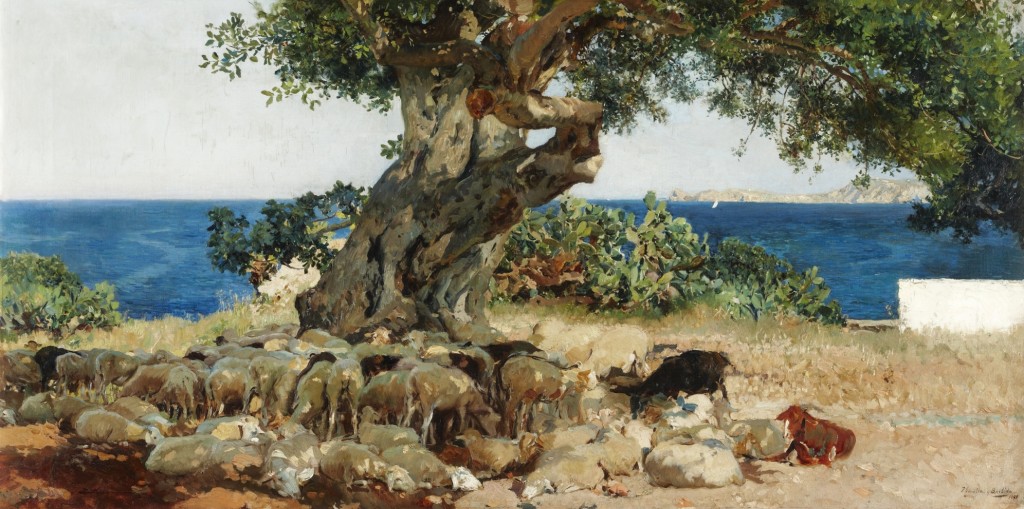
Rotational grazing is one the most powerful tools we have to sequester carbon through agriculture. We can increase its carbon-sequestering capacity, and its livestock production power, by adding widely-spaced trees. This practice of integrating trees with grazing is called silvopasture. Studies have shown that in many cases trees actually increase the productivity of pasture beneath them, especially trees that cast light shade.
This article is about a particular kind of silvopasture, where the trees literally drop food to the livestock grazing below. Around the world there are many farming systems that utilize this concept, most famously the dehesa of Spain and Portugal which produces gourmet acorn-fed pork. Here I’m narrowing the focus a bit more, to legume trees that drop nutritious pods to the ground for ruminant livestock like cattle, sheep, and goats. There are “fodder pod trees” like this for most of the world’s climates.

These trees are providing more than just food for animals. Livestock enjoy the shade they provide, especially in the tropical sun. Many of these trees fix nitrogen. Some even have pods edible for humans.
Unfortunately not all of these pods fall to the ground when ripe, some must be knocked off the tree with poles, increasing labor requirements. To my knowledge there has been little or no breeding of these trees for the purpose of feeding livestock. The foliage of many serves as a fodder, and some make excellent firewood as well.
The great majority of these species hail from semi-arid Africa savannahs, but this may in part result from a lack of research in other regions. Surely there are many, many more. Savannahs would be the best place to search for such species as they have coevolved with large grazing and browsing animals. An asterisk (*) indicates pods also edible by humans. Sources: Nitrogen Fixing Tree Association NFT Highlights and World Agroforestry Center Agroforestree Database.
| Latin Name | Climate | Native Range | Nitrogen Fixation |
| Acacia leucophloea | semi-arid tropical lowlands | Asia | yes |
| Acacia nilotica | semi-arid tropical lowlands | Africa | yes |
| Acacia saligna | semi-arid tropical lowlands | Australia | yes |
| Acacia senegal | semi-arid tropical lowlands and highlands | Africa | yes |
| Acacia seyal | arid to semi arid tropical lowlands | Africa | yes |
| Acacia tortolis | arid to semi-arid tropical lowlands, highlands | Africa | yes |
| Adenanthera pavonina | semiarid to humid tropical lowlands | Asia | yes |
| Cassia grandis | humid lowland tropics | tropical Americas | some |
| *Ceratonia siliqua | Mediterranean | Mediterranean | no |
| Enterolobium cyclocarpum | yes | ||
| *Erythrina edulis | semi-arid to humid tropical highlands | Andes | yes |
| *Faidherbia albida | arid to humid tropical lowlands and highlands | Africa | yes |
| *Gleditsia triacanthos | cold humid and arid, Mediterranean, tropical highlands | North America | no |
| Newtonia buchananii | humid tropical lowlands and highlands | Africa | no |
| *Parkia biglobosa | semiarid to humid tropical lowlands | Africa | yes |
| *Parkinsonia aculeata | arid to semiarid tropics and subtropics | Americas | no |
| *Piliostigma thongii | semiarid tropics | Africa | yes |
| Pithecellobium dulce | semi-arid to humid tropical lowlands | Americas | yes |
| Prosopis africana | yes | ||
| *Prosopis alba | semi-arid tropics | South America | yes |
| Prosopis chilensis | semi-arid tropics and subtropics | South America | yes |
| Prosopis cineraria | arid to semi-arid tropical lowlands | Asia & Middle east | yes |
| *Prosopis glandulosa | arid to semi-arid, subtropics to cold | North America | yes |
| *Prosopis juliflora | yes | ||
| *Prosopis pallida | semiarid tropics | South America | yes |
| Prosopis tamarugo | arid tropics | South America | yes |
| Samanea (= Albizia) saman | semi-arid to humid tropical lowlands | tropical Americas | yes |
| Senna singueana | semiarid tropics | Africa | no |
Again note that nitrogen-fixing legumes are often likely to escape from cultivation. Always investigate your regional native plant resources first. I’m quite certain that there are tens or hundreds more species that produce fodder pods, as well as many more that drop food of one kind or another to ruminants. For example there are many more species of honey locust (Gleditsia) in Asia.





